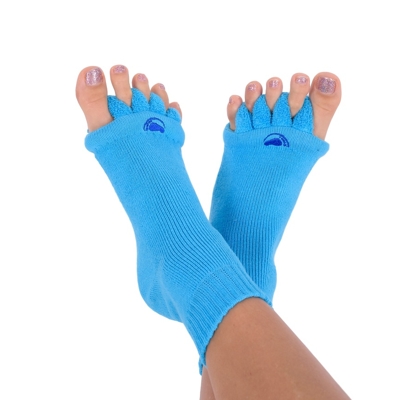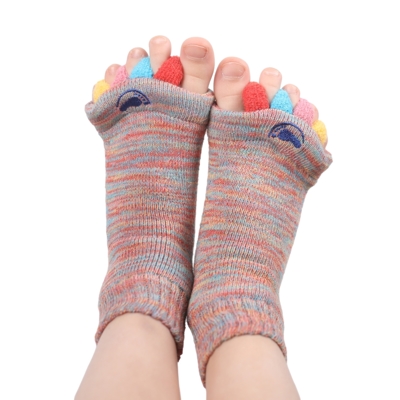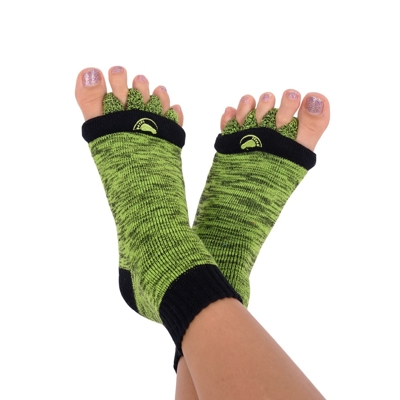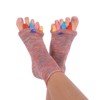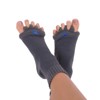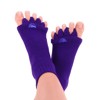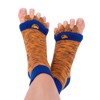The difference between the transverse and longitudinal arch and tips on how to ensure they function correctly
 The foot is a relatively complex mechanism. After all, it does have to bear the weight of our whole body. The arch is what keeps the foot stable and protects the whole body against shocks. There are two parts to the arch: transverse and longitudinal. What is the difference between them and what to do to prevent fallen arches and related deformities?
The foot is a relatively complex mechanism. After all, it does have to bear the weight of our whole body. The arch is what keeps the foot stable and protects the whole body against shocks. There are two parts to the arch: transverse and longitudinal. What is the difference between them and what to do to prevent fallen arches and related deformities?
No two arches are alike
The human foot has two basic functions:
- supportive
- locomotory
The supportive function means that the feet bear our entire body weight. The locomotory function, as the name implies, is responsible for the movement of our body. For the foot to carry out both of these main functions, it needs to be adequately stable. There are three main points of support that keep the foot stable. The first is situated at the hump of the heel bone, while the other two can be found at the heads of the medial and lateral metatarsals (the big toe and the little toe). Between these support points are the longitudinal and transverse arches, which protect the soft tissue of the sole, the nerves, blood vessels and joints, and help to keep the foot generally supple. The transverse arch can be found at the heads metatarsals, also known as the forefoot, which joins the first and the fifth head. The longitudinal arch follows the curve of the sole from the metatarsals to the heel bone.
The arch of the foot thus absorbs impact as we walk or run, thus protecting the spine and other parts of the body from shocks. The arch develops until a child is around six years of age. If the muscles and ligaments that hold the arch in the correct position do not develop properly by then, the child can already suffer from flat feet at that age.

How to recognise a fallen arch
A collapsed arch, also known as a fallen arch, is caused by a weakening of the muscles and loosening of the ligaments in the sole. The deformity resulting from a fallen arch is known as flat feet. A fallen arch can also lead to metatarsalgia or Morton's neuroma, which affect the forefoot. A fallen arch can also cause deformities of the foot and toes, such as hammer toes, bunions or heel spurs.
Fallen arches are caused primarily by excess weight on the foot resulting from excessive strain from standing for long periods of time, walking or running, and also from obesity or wearing unsuitable footwear for too long. Other factors include heredity, hypermobility (relaxed muscles and tendons) or weak stimulation of the feet (walking barefoot on flat surfaces, such as at home, etc.).
The symptom of a problem with the statics of the arch is unpleasant pain after or during exertion, and also while at rest in the later stages. The pain may be accompanied by swelling, cramps or tingling that extends to the toes. The most reliable form of diagnosis is a podoscopic examination, which scans the imprints of your sole. However, you can try this for yourself, for example by pressing the soles of your feet into sand or pressing your wet sole onto a dry surface. If the imprint copies the entire silhouette of the sole, it is highly likely that you have flat feet. You can recognise the imprint of a healthy foot in that it contains the tips of the toes, the forefoot, the outer part of the sole and the heel.
How to ensure the arch functions correctly
We have a few tips for you on how to ensure your arches function correctly. As a general summary, the foot needs to be adequately stretched, with good circulation; activity and relaxation are also important. You can manage most of these activities in the comfort of your home, and yet they will be hugely beneficial for your feet.
Create foot exercises
If you are the playful type and are happy to do this at home, you can help to keep your arch working properly by doing a few simple exercises. Take off your slippers and socks, and let’s go. Try to pick up various objects using your toes, such as a towel, crayons, various small toys, balls and other items. You can then try tearing paper or newspaper with your feet. What might seem less exciting but is still effective, is to tread on small balls, starting with a soft one and then stepping on harder ones, or trampling with your feet while sitting down.

Unstable surfaces
Another reliable method of strengthening the feet is to use unstable surfaces. This means merely walking barefoot on uneven ground, such as sand, small stones or grass, or doing exercises on various balance or acupressure mats. If you want, you can try different ways of walking barefoot – on the inner edges of your feet or on tiptoe. Here, however, make sure that you don’t strain your feet too much.
Quality regeneration
The key to healthy feet is quality rest and regeneration. This enables you to combine doing something pleasant with something useful. By far the easiest way to rest your feet is to put them in a raised position. This also helps to prevent swelling after a hard day on your feet. By regeneration we also mean things such as a foot massage, which you can also apply yourself. You can also improve the blood supply to the feet, and stretching and loosening them by regularly wearing Foot Alignment Socks. And while doing that you can watch TV, read, or even sleep. You can read about all the ways that Foot Alignment Socks can help in our section About socks. You can also improve circulation in the feet by showering them with hot and then cold water. The best thing is to combine the above tips in different ways. You’ll be doing your feet a great favour.
If you’re interested in how to treat problems caused by fallen arches, read our article on How to deal with a fallen arch.


